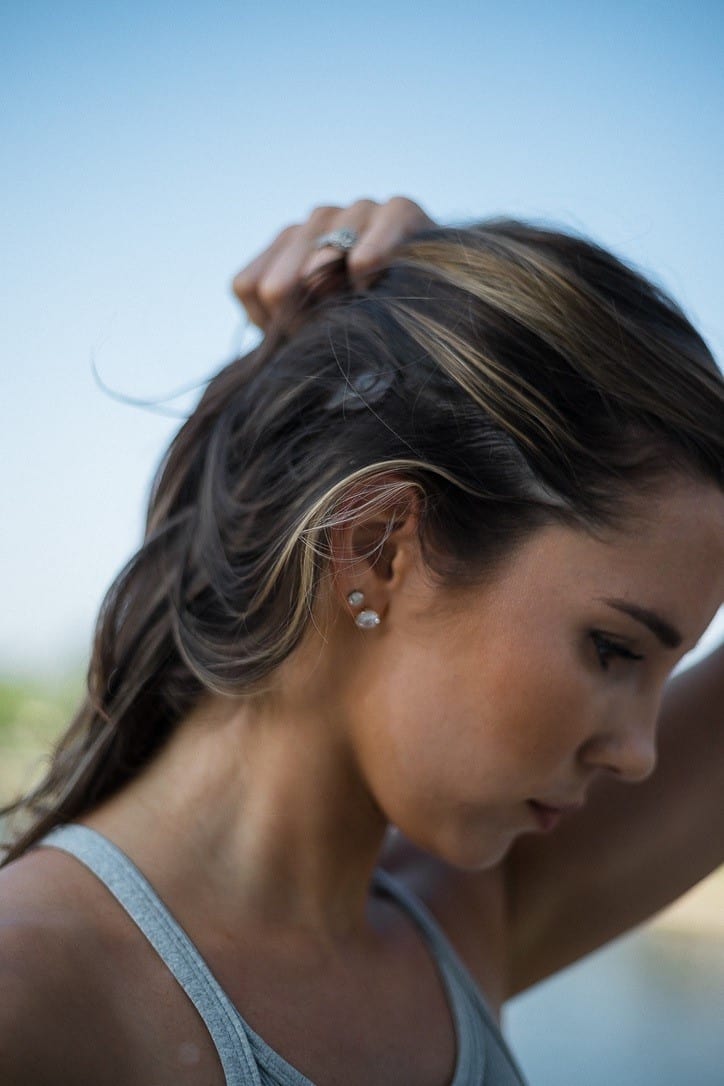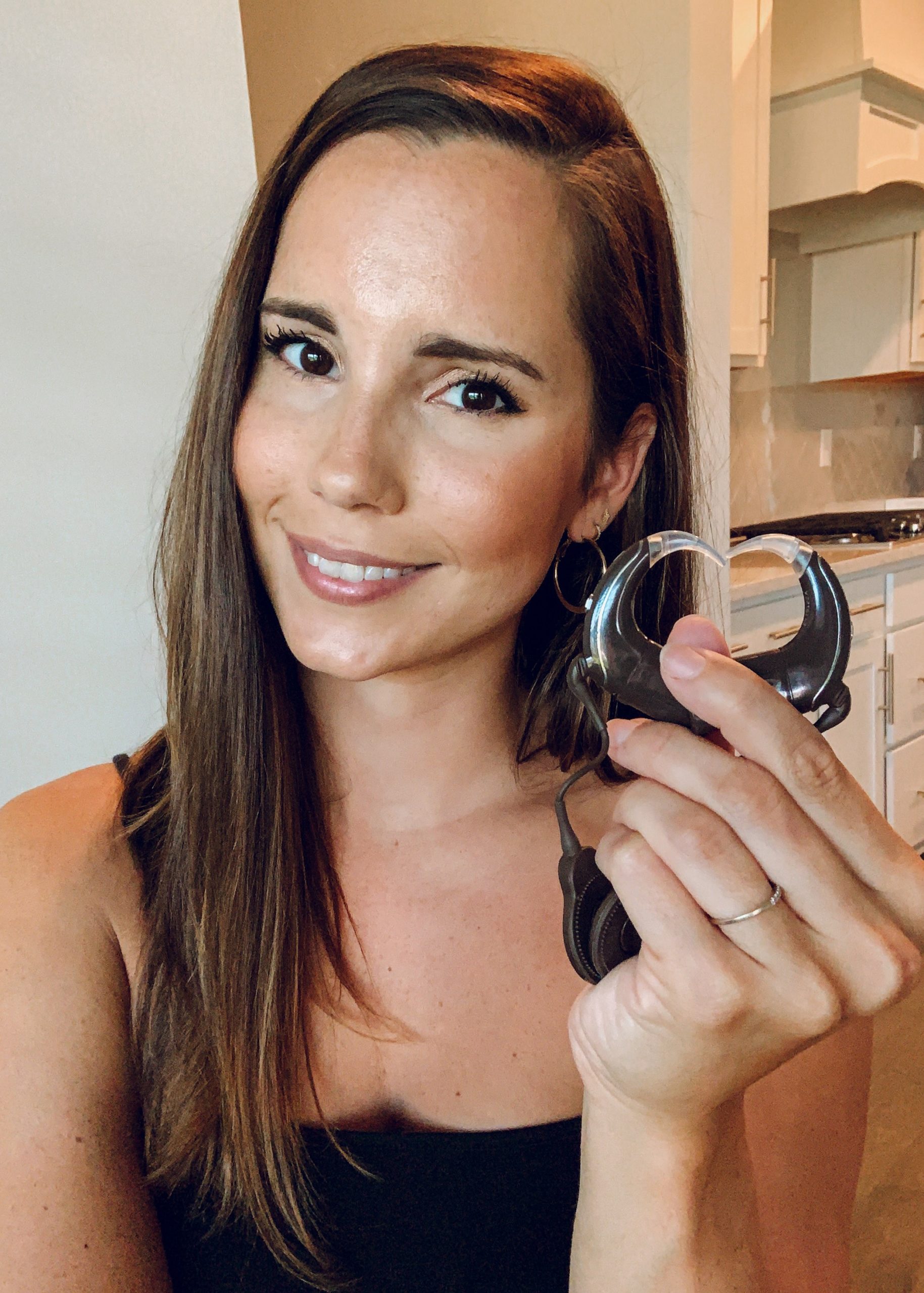After Jessica was given an early misdiagnosis of her hearing loss, her mother knew something still wasn’t quite right. After seeking additional advice from a pediatric audiologist, Jessica was finally able to get a correct diagnosis: she had been born with a recessive genetic mutation called GJB2/Connexin 26. They realized that hearing aids would never be enough, so on their pursuit to finding a better solution, they were led to life-changing cochlear implants. Now, Jessica enjoys giving back to the hard of hearing and deaf communities.
“A year before I was born, my mom watched an episode of 60 Minutes1 about the first child in the US to receive a cochlear implant. She didn’t know just how relative this child’s story would become, but she would soon find out.
When I was born in the late fall of 1993, my parents saw me as a healthy baby, but shortly after, my mom began to have suspicions that something wasn’t quite right. I would startle to light but not sound, would not respond to sound and would also panic if my parents left the room and I couldn’t see them. Her mental wheels began to turn, and by the time I was 4-5 months old, my mom was fairly certain something was wrong with my hearing. Little did they know that in the next couple of months, the trajectory of their lives, and mine, would change due to a recessive genetic mutation called GJB2/Connexin 26 which caused severe to profound hearing loss.
A turning point in my diagnosis
 My mother’s intuition was correct, and by 9 months old, I was misdiagnosed with a moderate to severe hearing loss. With poor access to pediatric audiologists in my hometown, an audiologist who saw mostly adults and a ‘handful’ of children missed the mark.
My mother’s intuition was correct, and by 9 months old, I was misdiagnosed with a moderate to severe hearing loss. With poor access to pediatric audiologists in my hometown, an audiologist who saw mostly adults and a ‘handful’ of children missed the mark.
Yes, I was misdiagnosed. I began my journey with hearing aids and speech therapy at 10 months, but I was not making progress as expected due to the misdiagnosis. In the fall of 1995, my parents traveled to Pennsylvania to a local hearing center for a week of immersion in auditory-verbal therapy. There, they met a pediatric audiologist who provided more news: first, their daughter was misdiagnosed and actually had severe to profound hearing loss, and second, my current hearing aids would not be successful for me due to the severity of my hearing loss.
Cochlear implant technology
 Luckily, hearing aids were not the last of my options to potentially hear well. My parents had been exploring the idea of cochlear implant technology with exposure to multiple sources and connections they cultivated. My mom worked hard with me at home to improve my access to sound, and despite ‘being under-amplified’ by my hearing aids, I had gained ‘remarkable listening skills.’ The specialty center in Pennsylvania referred my parents and I to the pediatric cochlear center in my home state for a follow-up diagnostic evaluation as well as an evaluation to determine if I was a candidate for a cochlear implant.
Luckily, hearing aids were not the last of my options to potentially hear well. My parents had been exploring the idea of cochlear implant technology with exposure to multiple sources and connections they cultivated. My mom worked hard with me at home to improve my access to sound, and despite ‘being under-amplified’ by my hearing aids, I had gained ‘remarkable listening skills.’ The specialty center in Pennsylvania referred my parents and I to the pediatric cochlear center in my home state for a follow-up diagnostic evaluation as well as an evaluation to determine if I was a candidate for a cochlear implant.
The next year was a whirlwind as I began the process for my candidacy for a cochlear implant, received my cochlear implant in August 1996, and was activated later that year. I continued my journey with speech therapy and intensive auditory verbal therapy with professionals as well as with my mom following up at home. But our journey with cochlear implants did not end there — God blessed my family with a brother and a sister, who also both have Connexin 26 hearing loss. Today, all three of us are bilateral cochlear implant users. My brother graduated from college and is currently a small business owner and my sister is undergoing pre-med studies at her undergraduate institution, while I am a Doctor of Physical Therapy.
Hear Now. And Always
My parents chose Cochlear because of their reputation and their commitment of ‘Hear Now. And Always’. My parents wanted us to have access to quality sound for the rest of our lives. I began my cochlear implant journey with the Spectra 22 on my right ear to have access to sound, and today, I am a bilateral cochlear implant user with the Cochlear™ Nucleus® 7 Sound Processors.
When I upgraded to the Nucleus 7 Sound Processors, I was hesitant at first, but I felt the smartphone connectivity2 and built-in True Wireless™ technology would not only improve my personal and work life but also the quality of sound I was getting. My audiologist activated my Nucleus 7 Sound Processors while my mom was in the room, and it was an immediate effect with increased clarity to my ears. My husband noticed immediately when I came home. My voice sounds clear and crisp, and I can now also tell more quickly when I need a programming tune-up because I can more easily discern sound quality and changes in my own voice.
Because of my Nucleus 7 Sound Processors and their built-in Bluetooth®3 capabilities, I now can enjoy phone calls, FaceTime®4 and music/live workouts for my exercise without having to use a third-party device. The quality of the sound is crisper and clearer with reduced background noise. Most of all, I love that I have my voice again. This, to me, demonstrates the power of processors to improve the quality of hearing, no matter how many programs and updates are performed.
The best of both worlds
 Without my cochlear implants and the amazing support system I have with my family, audiologists and speech therapists, I believe I would not be able to access the dream that I am currently living. Working as a physical therapist where I am able to serve others the way that my therapy team served and cared for me brings me great joy. Because of my access to sound, I now have the ability to serve others with my given gifts. Not only can I serve others in my clinic, but I am also a blogger and deaf advocate.
Without my cochlear implants and the amazing support system I have with my family, audiologists and speech therapists, I believe I would not be able to access the dream that I am currently living. Working as a physical therapist where I am able to serve others the way that my therapy team served and cared for me brings me great joy. Because of my access to sound, I now have the ability to serve others with my given gifts. Not only can I serve others in my clinic, but I am also a blogger and deaf advocate.
Outside of my full-time job, I create IGTV videos covering everything from my hearing loss and cochlear implant journey and provide access to different resources so my followers can make informed decisions. I love that I can serve my community of deaf and hard of hearing people. Because of my access to sound as well as being deaf, I have the best of both worlds in the hearing and deaf communities, where I have so many meaningful relationships. I’ve made connections across the spectrum of the deaf community that bring me endless joy.
I am grateful to be able to hear now, hear always and have access always with my Nucleus 7 Sound Processors.”
If you have a child with GJB2/Connexin 26 gene mutation, click here to learn more about how cochlear implants can open up a world of opportunities.
- Copyright © 2021 CBS Interactive Inc.
- For information on sound processor and app compatibility, visit www.cochlear.com/compatibility
- The Bluetooth® word mark and logos are registered trademarks owned by Bluetooth SIG, Inc. and any use of such marks by Cochlear is under license.
- FaceTime is a trademark of Apple Inc., registered in the U.S. and other countries.